We may receive a commission when you use our affiliate links. However, this does not impact our recommendations.
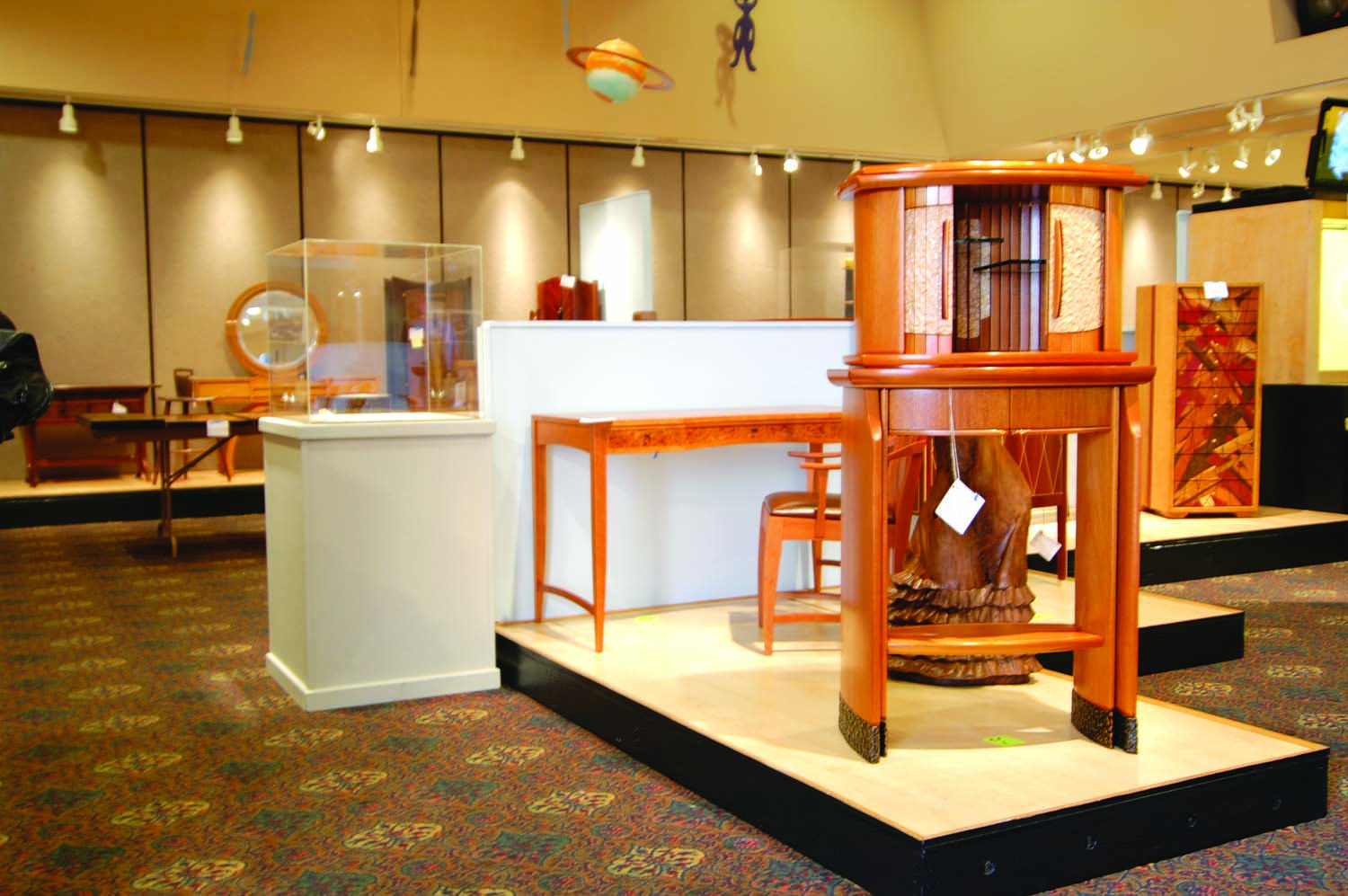 “The best thing about DIW is that it’s open to all woodworkers, and winning an award—especially for the first time—really encourages participants to keep at it and enter again the following year.” — Craig Thibodeau
“The best thing about DIW is that it’s open to all woodworkers, and winning an award—especially for the first time—really encourages participants to keep at it and enter again the following year.” — Craig Thibodeau
“I’ve entered three or four times over the past seven years. One year the two pieces I entered won three top prizes, and one of them sold at the end of the exhibition.” — Steve White
Whether to show their work for personal satisfaction as an enthusiast or income as a professional, woodworkers are always on the lookout for galleries and exhibitions that feature woodworking. A good turnout for a local gallery show might start with a few hundred people attending an opening event, followed by a steady but small stream of viewers over the show’s three- or four-week run. A museum show measures its success in larger numbers, up to 10,000 viewers, perhaps. With luck, your piece might make it into a magazine, through an article that covers the show, which could push the number of viewers to 20- or 30,000.
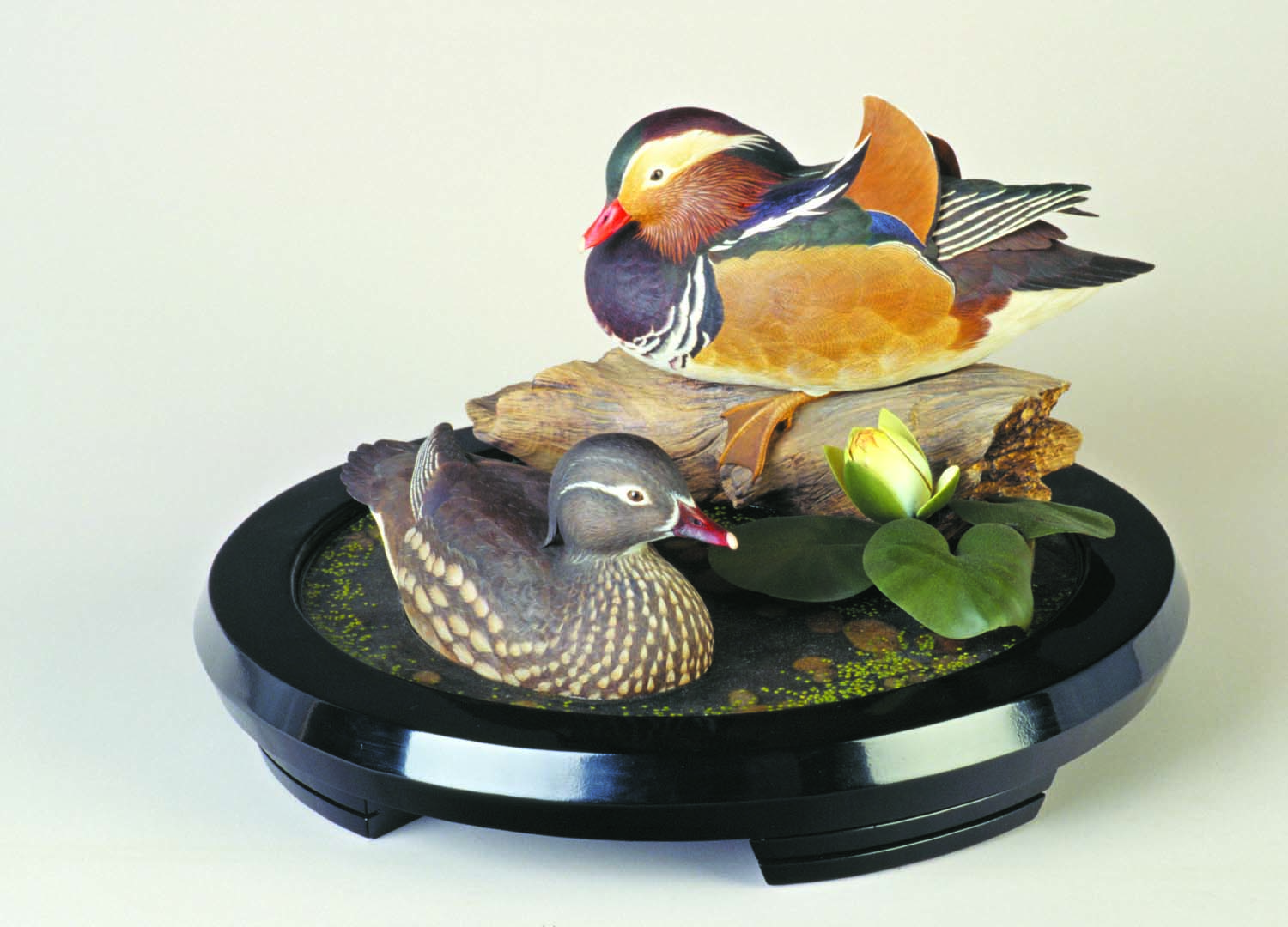
RICHARD OTSU Pair of Mandarin Ducks 1999 2000 Best in Show Tupelo, poplar 12″ x 22″
Now, consider the prospect of showing off your work to 100,000 people or more—and not in a catalog or magazine, or on a computer screen, but live and up close? If you think such an audience is a pipe dream, read on. This is the story of “Design in Wood,” the largest annual juried woodworking exhibition in the country.
A Card Table Came First
The story begins in 1981, when a part-time San Diego woodworker named Lynn Rybarczyk, looking around for opportunities to exhibit, got the notion to approach the Southern California Exposition—now known as the San Diego County Fair—about including a woodworking show. The Expo already had a Flower and Garden Show, a Gem Show, and a Photography Show, so it was open to the possibility of adding a woodworking show; all that was needed was a local group to sponsor it.
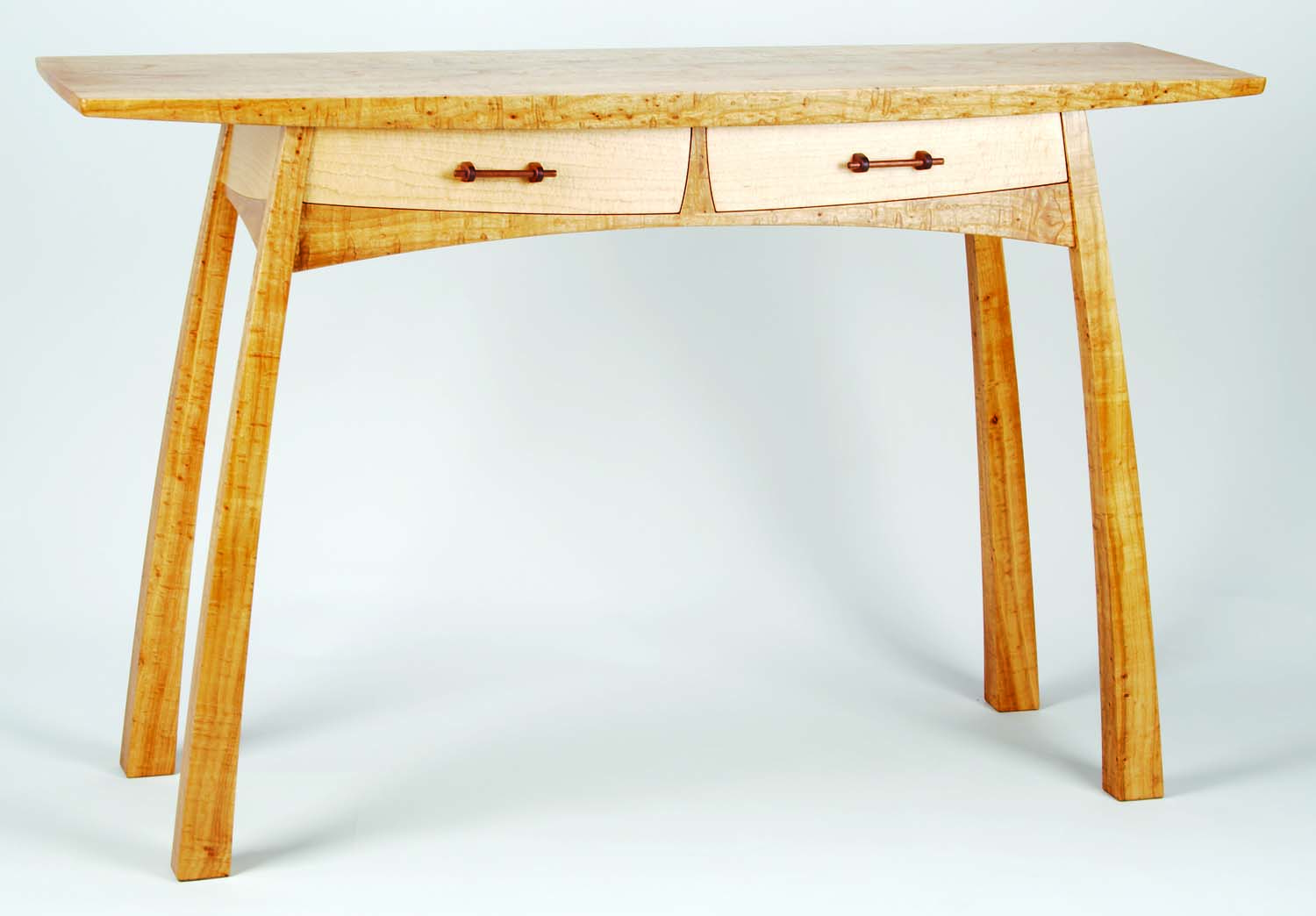
STEVEN WHITE Twin-Drawer Hall Table (2005) 2005 Excellence in Design Elm, ash, walnut 34″ x 54″ x 18″
With that in mind, Rybarczyk and two fellow woodworkers—Chuck Masters and Brian Murphy—set up a card table in front of “The Cutting Edge,” a woodworking store that was just opening its doors in San Diego, and began signing up members for a club and show. The first meetings, held at the elementary school where Rybarczyk taught, were small. But the next spring 35 members of the fledgling San Diego Fine Woodworkers Association (SDFWA) entered 100 pieces—juried down to 45 due to space limitations—in the First Annual Design in Wood Exhibition at the county fair.
The Old County Fair
The San Diego County Fair was founded in 1880 as a small agricultural fair, but as produce and livestock became an increasingly important part of California’s economy, the fair grew in size and stature. Horse racing soon became associated with the fair, since farmers who competed for the best produce and livestock also wanted to know who owned the fastest horse. When the State legislature legalized betting on horse races at county fairs in 1933, the economic future of the San Diego County Fair was set.
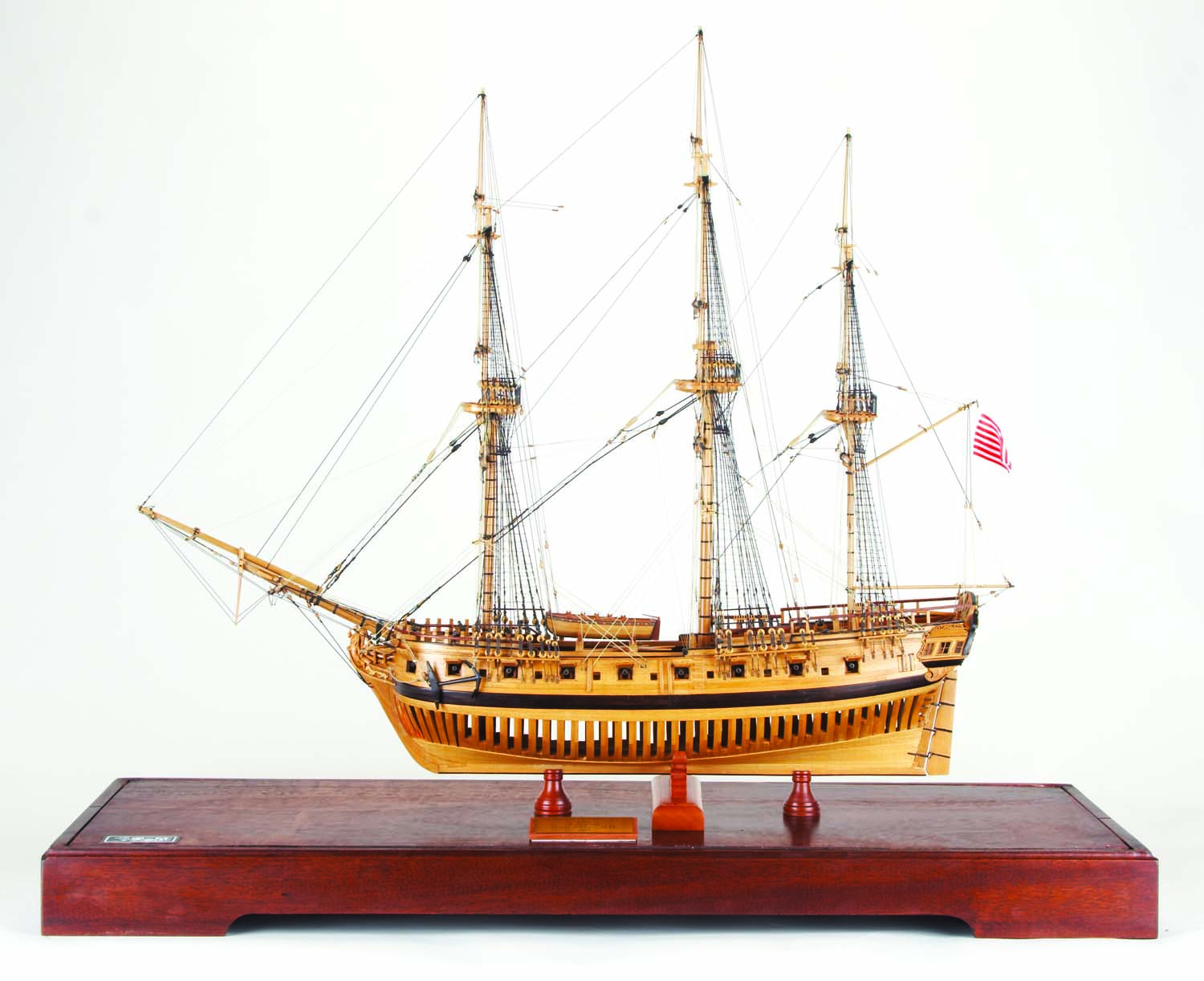
HENRY BIKHAZI Oliver Cromwell (2006) 2006 Best in Show Boxwood, pau marfin, ebony, holly lemonwood 39″ x 43″ x 19″
A permanent fairground was established at Del Mar, on the north side of San Diego, and today the Del Mar Fairgrounds has year-round activity, an annual operating budget of over $50 million and hundreds of full-time employees.
The Early Shows
Lynn Rybarczyk and Chuck Masters were Co-Superintendents for the first exhibition, and Chuck Masters for the next four. Each was a relatively small show of 30-40 pieces on pedestals, gathered from the local woodworking community. These early exhibitions garnered praise for the quality of the work on display, but there was not much growth, and after the fifth year the Fair informed the organization that they had to either raise the level of the exhibition or lose it. At that point SDFWA passed the baton to Pat Edwards, a local furniture maker who specialized in traditional work and was also keenly interested in the process of woodworking.

CRAIG THIBODEAU Gardenia Sideboard (2006) 2007 Best in Show Wenge, anigre, maple, ebony, pau ferro, boxwood, poplar, holly 36″ x 72″ x 16″
Explosive Growth
Edwards’ first change was to make the exhibition more dynamic by introducing activities similar to those he had seen at Sturbridge Village and other historic recreations of traditional craft communities. The Design in Wood exhibition added a traditional 19th-century cabinetmakers’ shop filled with antique hand tools. Edwards had recently repaired a 100-year-old children’s school chair and suggested that SDFWA members could build 50 of these chairs in the shop during the Fair’s run and give them to charities. Edwards also invited carvers, turners, modelers, and other local groups to give demonstrations. This gave fair visitors a reason to linger at the exhibition or return to view the varied activities throughout the day. As Superintendent, Edwards had an unlimited number of free tickets to the Fair, which he could offer to volunteers in exchange for their work at the exhibition —a great incentive, since the Fair was a popular family activity and the tickets were a valuable commodity.
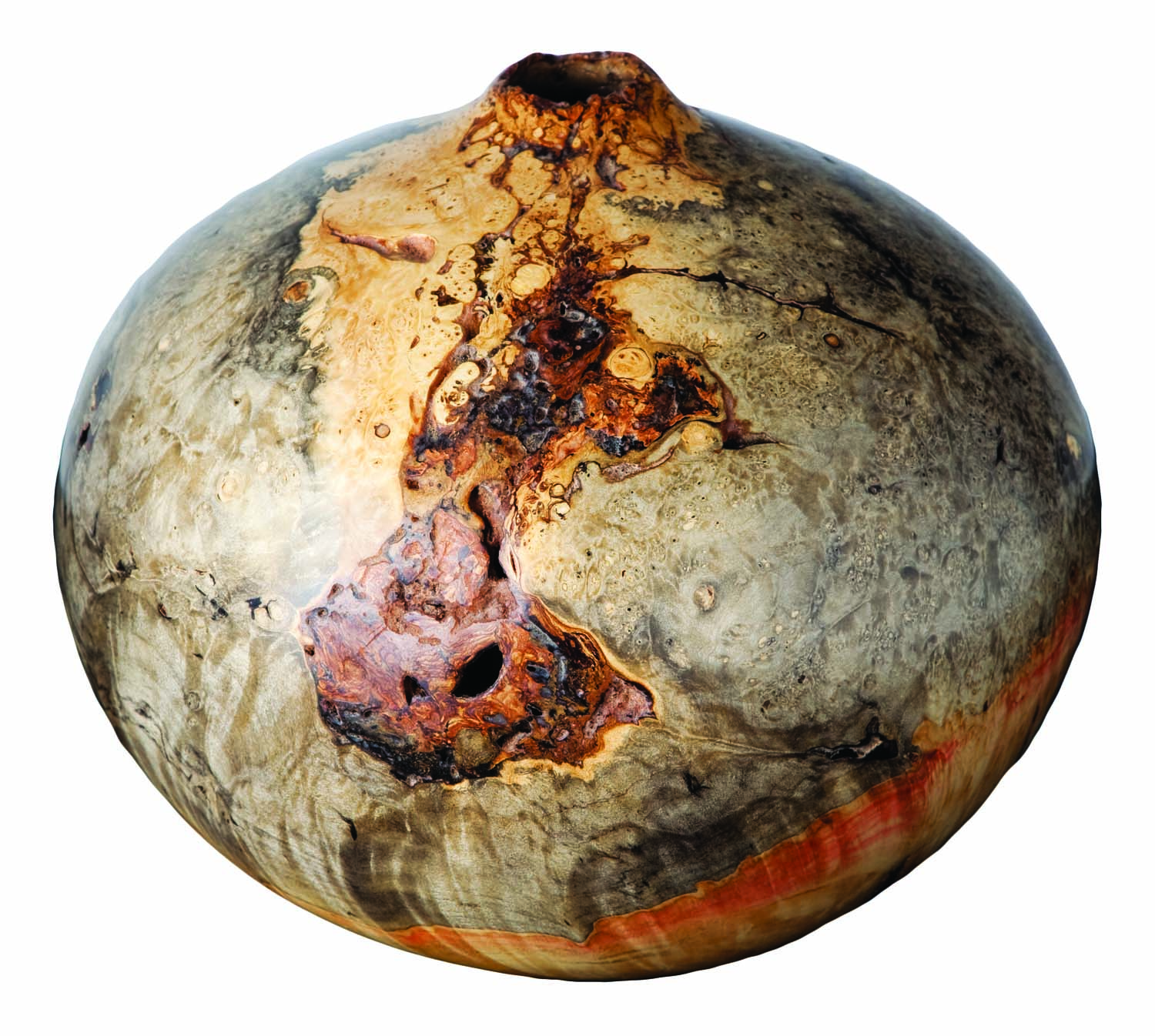
MIKE JACKOFSKY Natural Edge Hollow Form (2009) 2009 First Prize, Wood Turning Box elder 13″ x 12″ Dia.
Edwards also grew the exhibition by expanding the jurying and awards categories. He described the process like this: “The year I started I had a budget of $750, but I soon learned that as a Fair Superintendent I could get a bigger budget if I could justify it. So I built up the exhibition each year, and after nine years I had a budget of $40,000. I created 16 different categories with three awards in each category. With a lot of chances to win a cash prize, we very quickly had several hundred entries.”
The combined strategy brought in more participants and more viewers. Over 100 volunteers from SDFWA—whose membership numbers well over 1000—produced the children’s chairs, another couple hundred built display cases and platforms, manned the exhibition during fair hours, etc. A steady cadre of members kept returning each year to make up the show committee. In 1995 Pat Edwards passed the Superintendent’s job and chairmanship of the committee to Bob Stevenson.
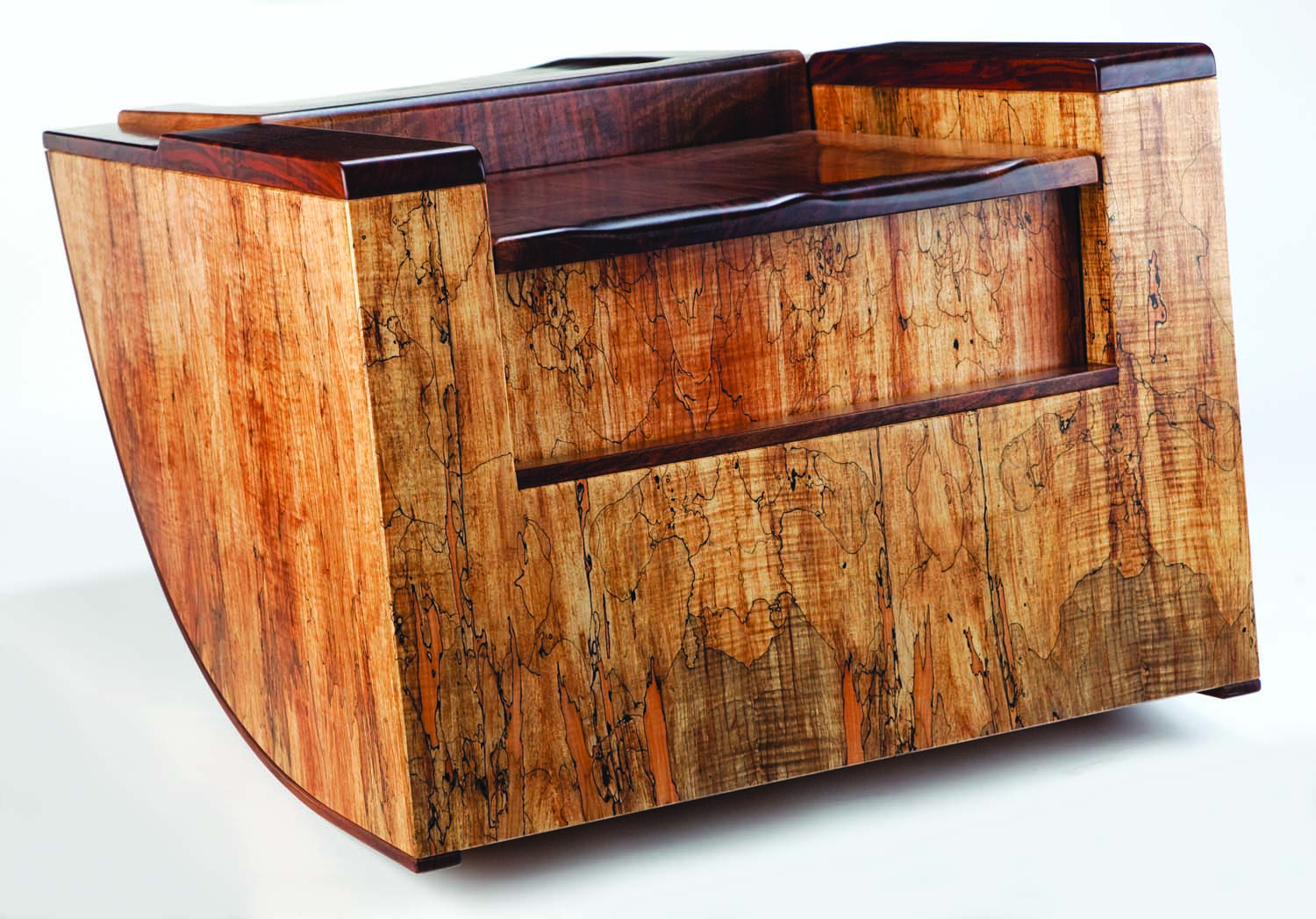
SUE SPRAY The Cube Rocker (2009) 2009 First Prize, Art Furniture Spalted curly maple, spalted claro walnut 25″ x 34″ x 39″
The exhibition continued its growth under Stevenson, with some notable improvements. A 7,500 sq. ft. exhibition hall was built on the fairground specifically for “Design in Wood.” Stevenson expanded the number of categories to 24, with five awards in each category. In addition, he established sponsored awards from local guilds and merchants, as well as from a number of major magazines including American Woodworker, bringing the total prize money to more than $22,000.
The number of entries has also grown under Stevenson, hovering consistently around 350 and topping 400 a few years ago. The 2012 Design in Wood Exhibition received 362 pieces from 202 woodworkers. Besides the increasing number of pieces, another change has been in the demographics of those who show their work. Over the years, Design in Wood entries have evolved from local to state to national, and this year the show became international, with entries from Puerto Rico and Australia.
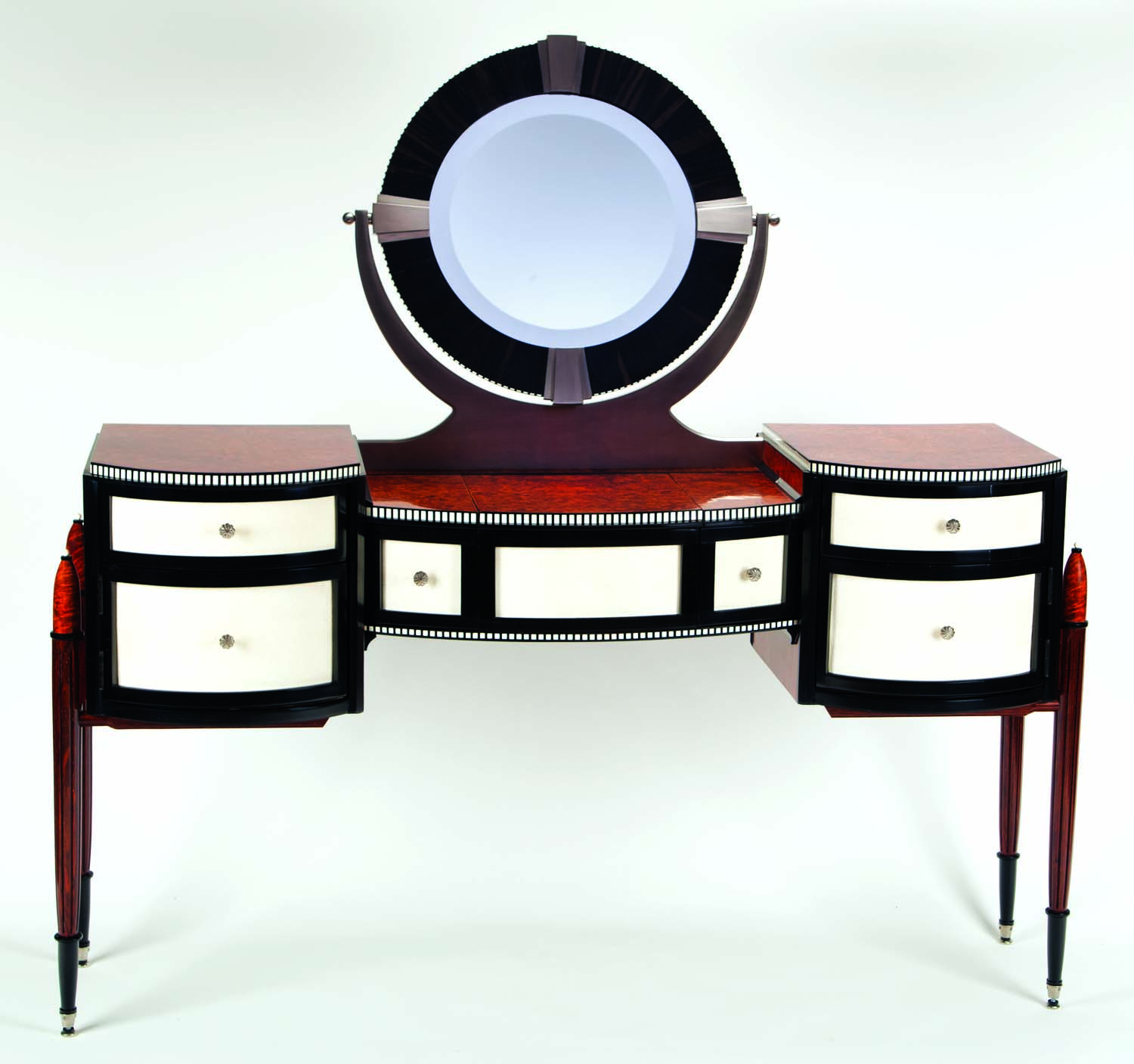
KORY ZUSSMAN Woman’s Dressing Table (2011) 2011 First Prize, Traditional Furniture Mahogany, amboyna burl, rosewood, ebony, ivory, mirror, brass, leather 60″ x 54″ x 22″
“The whole idea of the exhibition,” says Stevenson, “was to have a place for people to show their work and get some recognition. At one point the SDFWA looked into acquiring gallery space in town, but we just couldn’t see any way to support it. The Design in Wood Exhibition, it turns out, is so much better. The exhibition is a bigger draw at the fair each year, and this year there were over one-and-a-half million people who came to the fair during those 24 days. We have no way to count, but even if a fraction of those people came through our show … ”
That’s an amazing evolution for a woodworker’s notion of 30 years ago.
Visit sdfwa.com to see award winners from the past 15 Design in Wood exhibitions and for information about the 2013 Design in Wood Exhibition.
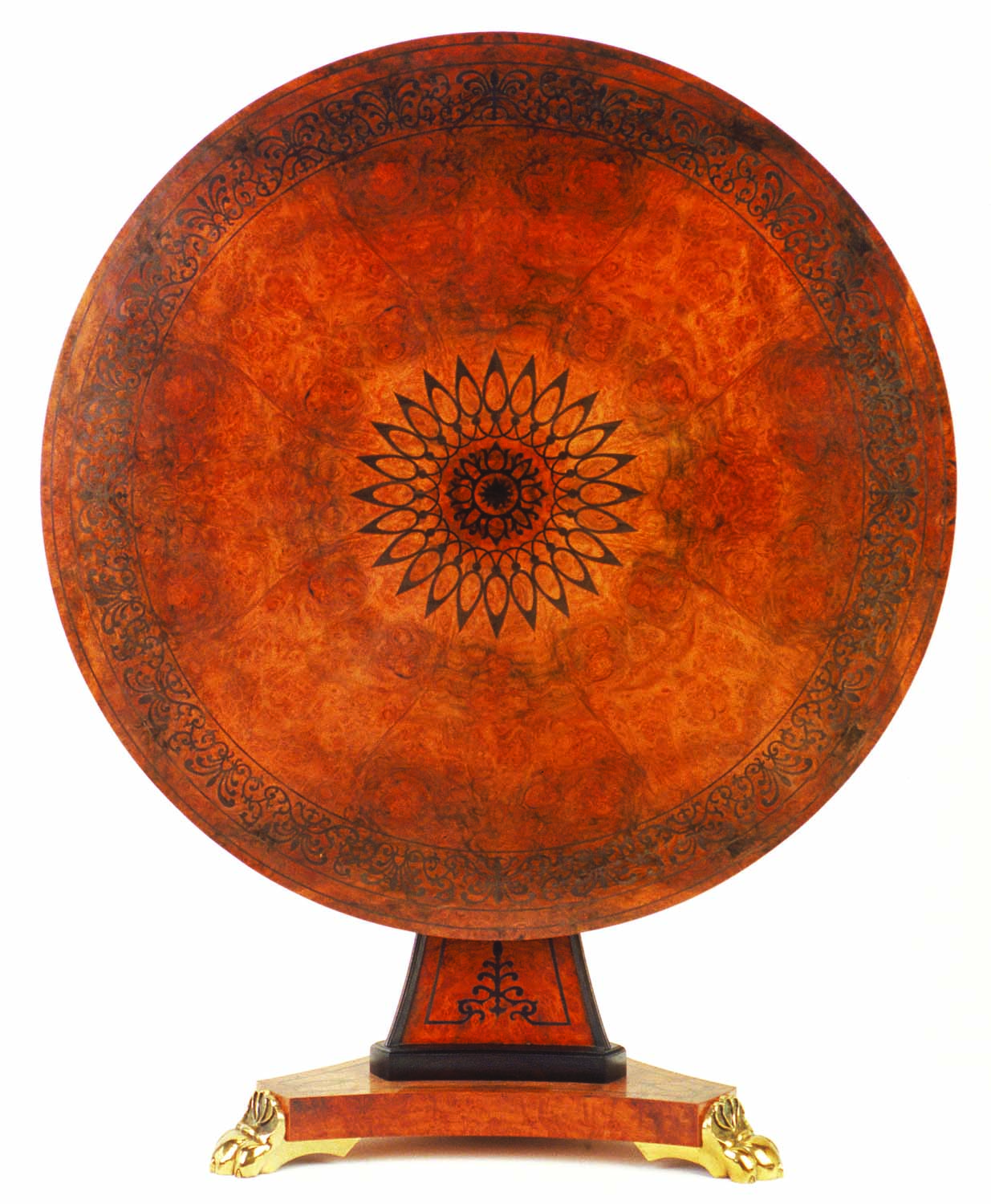
PAUL SCHURCH Tit-Top Table (2007) 2002 Best of Show Award Laurel, black pear, bronze 30″ x 42″ Dia.
Here are some supplies and tools we find essential in our everyday work around the shop. We may receive a commission from sales referred by our links; however, we have carefully selected these products for their usefulness and quality.







